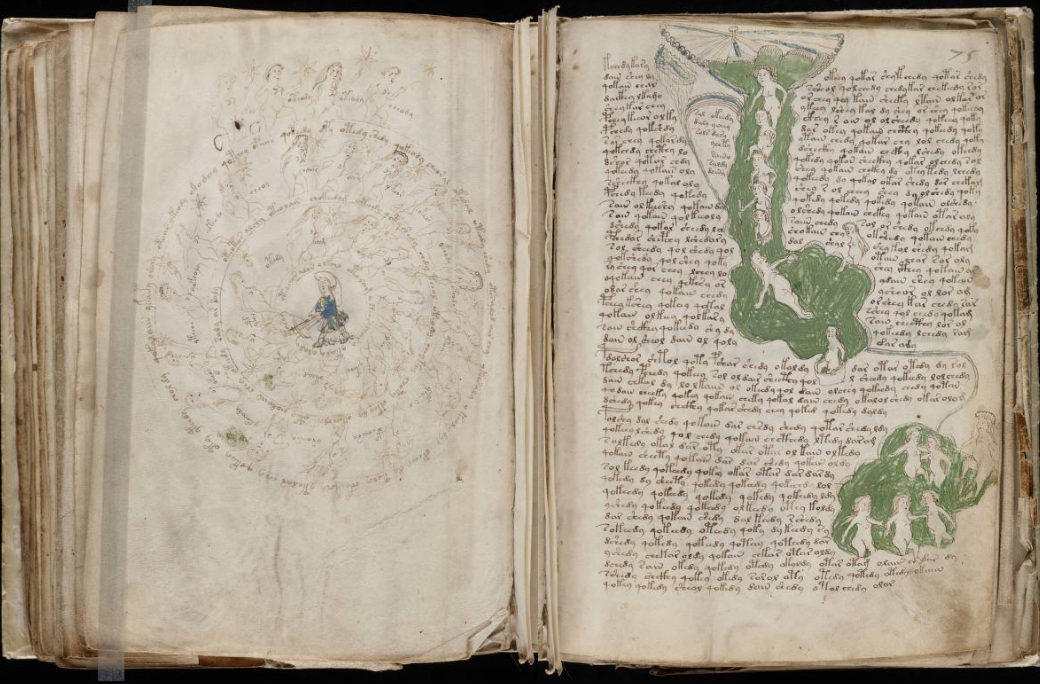

This conversation has been edited for length and clarity. She spoke with Knowable about some of their insights. Seeing the manuscript in person got Bowern thinking: Even though her main research focus is on documenting endangered Indigenous languages in Australia (where she’s from), perhaps some of the statistical methods, software, and approaches that she and other linguists use to study and compare languages could be used to study the Voynich manuscript.īowern created and taught an undergraduate class to explore the possibilities, which she and post-doctoral researcher Luke Lindemann describe in a recent paper in the Annual Review of Linguistics.
Ancient voynich manuscript translation tv#
The mystery surrounding the Voynich manuscript has inspired novels, cameo appearances in popular TV shows and video games, and even a symphony - which debuted at Yale in 2017, along with an exhibit Bowern attended with a couple of her students. A “pharmaceutical” section depicts what may be herbal remedies - plant roots alongside medicine bottles - and a fifth section, unillustrated, has blocks of text demarcated with little stars. The section with the bathing nymphs is often called the balneological section, a reference to the science of baths and bathing. The astrological section includes zodiac charts and depictions of the sun and moon. The section on plants is the longest, making up just over half of the manuscript. It appears to have five main sections, she says. “It’s surprisingly small, a bit bigger than a paperback,” says Yale linguist Claire Bowern. The manuscript now resides in the Beinecke Rare Book & Manuscript Library at Yale University.

None of these claims have gained widespread acceptance.

Ancient voynich manuscript translation cracked#
If it’s written in code, no one has cracked it, though many have tried. Stranger still, the manuscript is not written in any known script or language. Its 200-odd pages contain dozens of colorful illustrations of plants, astrological diagrams, and naked female figures bathing in elaborately plumbed pools of green water. The 15th-century Voynich manuscript has puzzled scholars and confounded attempts to decipher it for centuries.


 0 kommentar(er)
0 kommentar(er)
